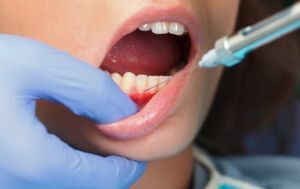 The method of intraligamentary anesthesia was created by a French dentist in the seventh year of the last century. Also this method is called intracondy.
The method of intraligamentary anesthesia was created by a French dentist in the seventh year of the last century. Also this method is called intracondy.
The aim of the procedure is to anesthetize soft tissues and teeth by means of special injections with an anesthetic solution that is injected into the periodontal fissures.
The main feature of this method of anesthesia is that the anesthetic is injected under a sufficiently high pressure, which distinguishes it from other anesthetic methods.
With high pressure, only a small part of the anesthetic falls into the slit-shaped periodontal space. The main part of it enters the area of the alveolar bone. From there, the liquid enters the periapical area.
Intra-connective anesthesia has a number of properties that allow it to stand out among other methods of anesthesia. These properties include:
- rapid impact - the effect most often occurs from the first minute after the injection;
- the duration of exposure reaches half an hour;
- is very easy to use, so it can be mastered quickly and easily;
- injections are almost painless;
- after the procedure, the patient does not feel the numbness of the tissues.
All of the above properties are very important for both adults who are forced to load their 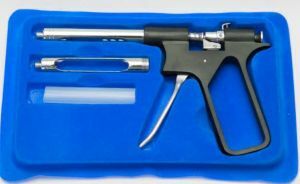 apparatus for their duty, and for young children who are afraid of pain.
apparatus for their duty, and for young children who are afraid of pain.
For children this method is the most optimal. This is explained by the fact that intra-connective anesthesia prevents the appearance of numbness of the cheeks, tongue and lips, the emergence of hematomas, and also facilitates more facilitated therapeutic interventions.
In addition, this method is not toxic and safe, due to the specific painkillers used.
Contents
- Scope and contraindications
- Types of injectors and anesthetics
- What are the advantages of injections in the periodontal space?
- Technique and nuances
Scope and contraindications
As a rule, dentists apply a variety of different methods of anesthesia in practice. All of them differ from each other in several factors, the main of which are: the location of the anesthetic solution, the duration of exposure, as well as indications and contraindications to the use of one or another technique.
Intraperiodontal anesthesia is indicated in the following cases:
- pulp extraction or tooth extraction;
- treatment of superficial and medium caries;
- installation of crowns;
- tooth preparation;
- treatment of inflammatory processes in the mouth area.
It can also be noted that this method is widely used in the treatment of teeth to children and pregnant or lactating women.
Regarding contraindications, the main ones are:
- periodontal purulent-inflammatory processes;
- flux;
- cyst;
- periodontal pocket;
- treatment or other actions with canines.
Types of injectors and anesthetics
Intraligamentary anesthesia is carried out with the help of special carpool syringes. To date, there are many types of injectors of this type, all of them must have a number of properties, the main of which are:
- the ability to maintain high pressure during the injection of an anesthetic solution;
- availability of a specific fluid removal system;
- availability of a swivel head or corner nozzle, which allows you to change the angle of the needle.
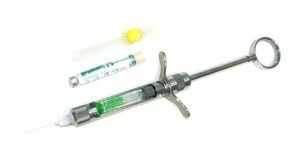 It should also be added that such syringes are made of materials that are capable of withstanding a variety of types of sterilization, as well as being easy to use and light in weight.
It should also be added that such syringes are made of materials that are capable of withstanding a variety of types of sterilization, as well as being easy to use and light in weight.
All injectors work thanks to the muscular strength of the dentist's hand, which allows the development of high pressure by means of a special reducer. Currently, the most common types of curule syringes are the following:
- STERINJECT and PERI-PRESS .These injectors have the appearance of a cross and are equipped with a special latch, which is held by four fingers. The tool promotes the use of maximum muscle strength. Each time the lever is pressed, 0.2 ml of anesthetic is injected into the patient's body.
- CITOJECT .The shape of these tools resembles a pen. Thanks to a special piston and a comb, 0.3 ml of an anesthetic solution is injected into the body.
- PAROJECT .These injectors have the form of a hollow metal cylinder, a size slightly smaller than a ballpoint pen. With each push on the piston, up to 0.6 ml of anesthetic solution is output.
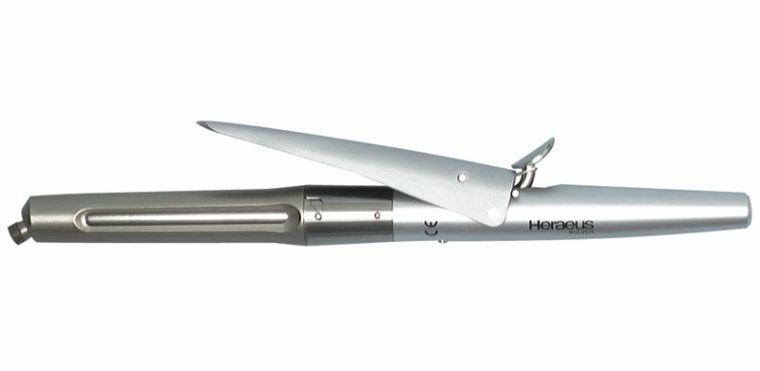
Injector dental CITOJECT for carrying out carpal anesthesia
In addition to the above syringes, others are very popular. For example, they can include the tools of the domestic manufacturer - IS-01-1-MID, which are equipped with a special rotary head, which allows you to enter the drug at any angle.
As for pain medications, dentists currently use carp local anesthetic solutions. Each ampoule has about 1.8 ml of a solution, which consists of a vasoconstrictor and an amide anesthetic.
What are the advantages of a prick in the periodontal space?
Carpal anesthesia has many advantages that make this method of anesthesia one of the most common in modern dentistry.
The main advantages are:
- Easy to use .If you take into account such methods of anesthesia as infiltration or exploratory, then they require special skills and considerable experience, and intraligamentary, on the other hand, is very simple to use, which makes it possible to apply it even without certain knowledge and skills.
- High efficiency .This method allows you to anesthetize almost any diseases and problems with the teeth. The efficiency percentage reaches 99 percent.
- Security .The anesthetic solution is administered in fairly small amounts, therefore it is possible to treat the teeth with intra-connective anesthesia even during pregnancy or during the breast-feeding period.
- Painlessness .Carpal pain relief does not bring any uncomfortable and painful sensations to the patient, that's why it is ideal for children or people who have a low pain threshold.
- Speed of exposure to .Treatment can begin immediately after the end of the injection.
Technique and nuances of
Initially, sanitation of the oral cavity and professional cleaning at the dentist.
When the dental plaque is completely removed and antiseptic treatment of the teeth and gingival grooves around them is performed, the 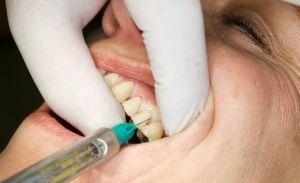 qualified dentist injects an anesthetic solution into the periodontal space under high pressure.
qualified dentist injects an anesthetic solution into the periodontal space under high pressure.
First, the needle of the syringe is drawn along the tooth surface, and then pierce the groove of the gum, inserting it deep into it a few millimeters until an obstacle appears in the form of a feeling of resistance to the gingival tissues.
When piercing the gum, the syringe should be at the center of the tooth at an angle of thirty degrees. Enter the solution by slowly pressing the handle of the injector. The average length of input is seven seconds.
If the needle has been placed correctly, then a sufficiently high tissue resistance will appear. Sometimes during the manipulation, there may be no outflow of solution from the needle, this can happen if it is pressed against the wall of the alveolus or the root of the tooth very tightly, and also in the case when its cavity is sealed with something.
To solve the problem, first of all, it is necessary to change the position of the syringe. If there is no positive result, then it is necessary to check whether the antiseptic agent passes through the needle.
Important for the use of intraligamentary anesthesia is that the dentist must very carefully monitor the progress of the solution through the syringe and its entry into the needle. In cases where a droplet of solution appears near the needle, it is necessary to change its location, because this indicates that it was located incorrectly.
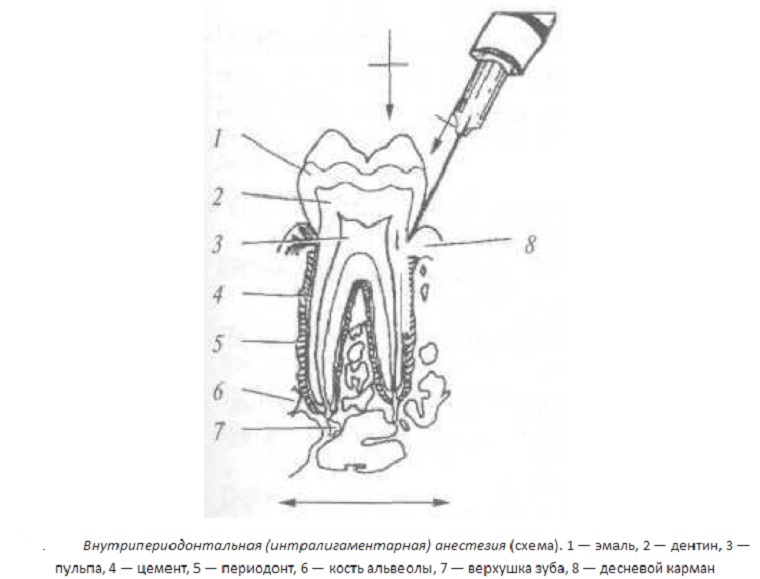
The number of injections is determined based on how many roots the anesthetized tooth has. In the presence of a single root, the patient is administered up to 0.17 ml of anesthetic.
If injectors with dispensers up to 0.6 ml are used, the drug administration is performed within seven seconds. On a tooth with one root, the drug is divided into 4 stages, with an interval between each of seven seconds.
After the solution has completely penetrated the gum, the needle keeps for ten seconds, and then it is removed. This is done so that the solution of the anesthetic completely dissolves, but does not come out.
Intrafeeding anesthesia is performed at the approximal tooth surface, that is, near all the roots. It follows that an anesthetic of a single root root will require a solution in the amount of 0.18 ml, for a two-root tooth - 0.36, and for a tooth with the presence of three roots - up to 0.55 ml.
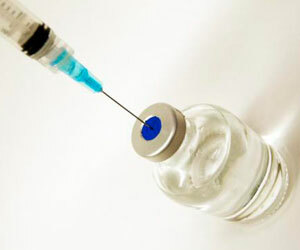 Intraligamentary method of anesthesia is a safe, highly effective, promising and simple enough method to conduct painless dental procedures of small and medium degree of trauma.
Intraligamentary method of anesthesia is a safe, highly effective, promising and simple enough method to conduct painless dental procedures of small and medium degree of trauma.
This technique is able to provide correct analgesia in almost all dental interventions.
Intraperiodontal administration of anesthetic can be applied to almost any patient, because it does not cause any side effects or adverse reactions of the body.
It should also be added that carpal anesthesia can be used not only as the main, but also an additional method of anesthetics in dental practice.
